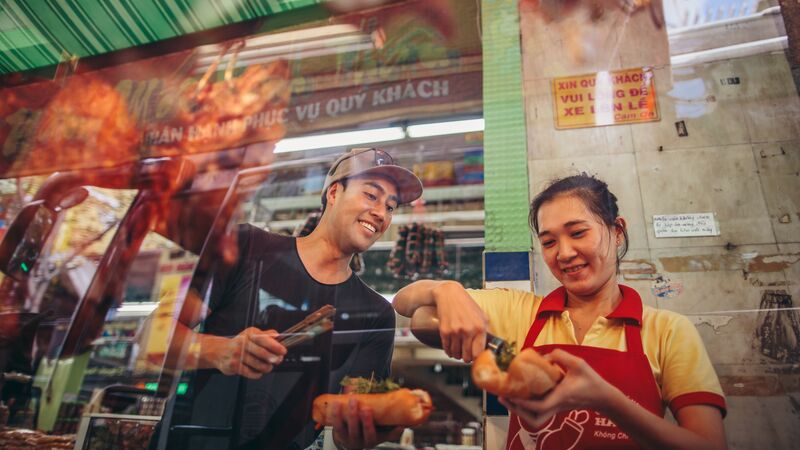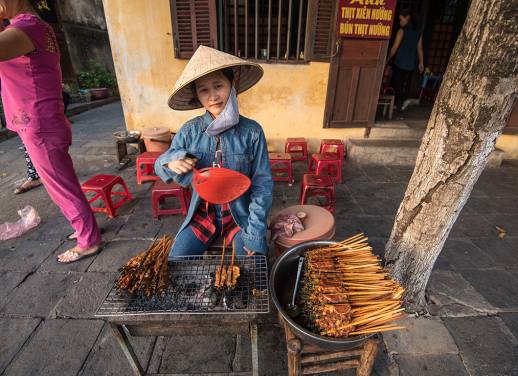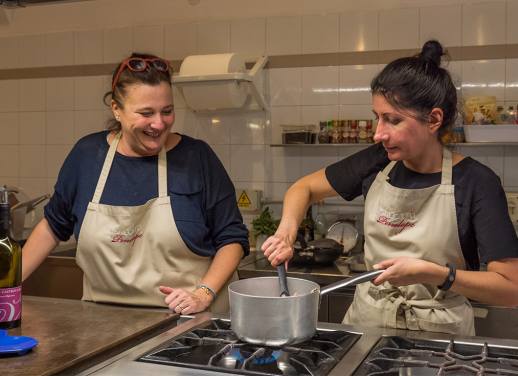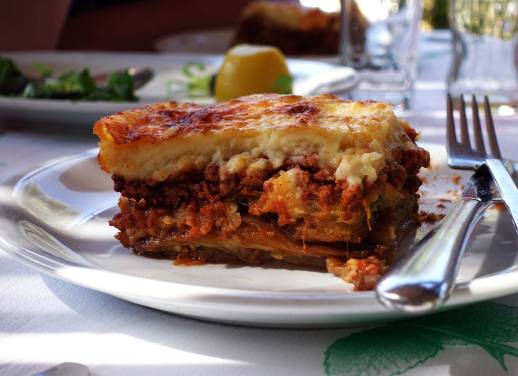Warning: don’t read this if you’re hungry.
I’ve lived in Melbourne for the last five years, and every now and then, I’ll think about the foods I miss back home in the UK. And do you know what regularly tops the list? A prawn mayo sandwich from M&S (IYKYK), followed by a Sunday roast with all the trimmings.
That prawn mayo sandwich never fails to hit the spot. In fact, sandwiches, in general, never fail to hit the spot. They’re cheap and easy to make, offer endless opportunities to get creative, and can be eaten for breakfast, lunch or dinner. But they also hold stories – and sometimes, the history baked into their origins is as layered as the sandwich itself.
From tasty tortas in Mexico to finger-licking francesinhas in Portugal, most countries have their own version of the humble (or not so humble) sandwich.
Here are 10 iconic sarnies to try on Intrepid’s Real Food Adventures around the world.
1. The francesinha, Portugal
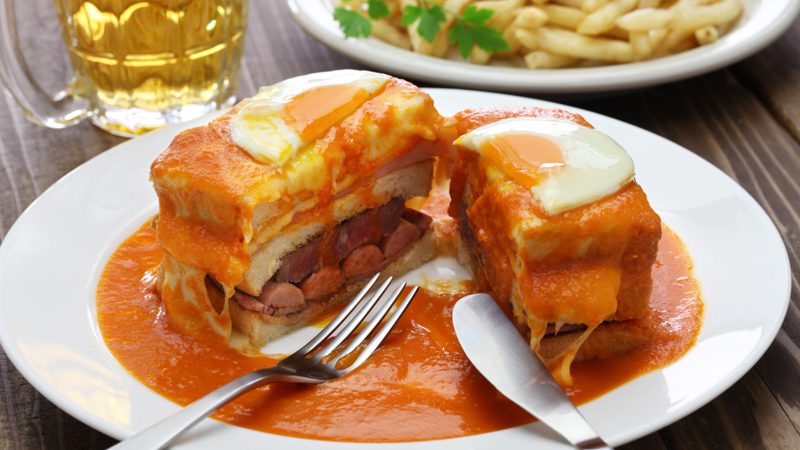
Hailing from Porto, this mighty sandwich isn’t for the faint-hearted. It consists of two thick slices of white bread wedged with ham, sausage, steak and cheese. It’s then covered with melted cheese and a spicy beer and tomato sauce, and topped with a fried egg. It’s usually served with a mountain of fries – because how else will you mop up the sauce?
In Portuguese, francesinha means ‘little French woman’ or ‘little Frenchie’. There are a few tales about its origin, but they all involve a man named Daniel da Silva. Many say he created the francesinha in the 1950s after developing a penchant for croque monsieur while living in France. Upon returning to Porto, he made a modified version with local ingredients.
Others say it honours a French woman he met on his travels. Either way, the francesinha is a monster sandwich that’s best eaten on an empty stomach with a knife and fork and, ideally, when you’re not wearing a white T-shirt.
Tackle the francesinha in Portugal
2. The sando, Japan
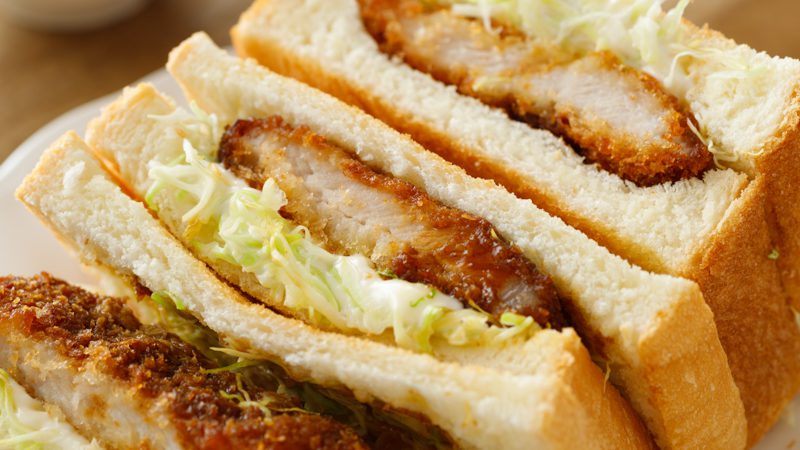
When you think about Japanese food, you probably picture sushi rolls, sashimi or steaming bowls of ramen. But if you browse the convenience stores in Japan, you’ll soon realise they love a sando, the Japanese word for ‘sandwich’. Along with jiggly cheesecake and Napolitan (spaghetti with ketchup, onions and sliced hot dogs), sandos are a type of yoshoku, or Western dishes with a Japanese twist.
They’re made with shokupan (Japanese milk bread), which has a higher concentration of milk and butter and is slightly sweet with a pillow-like texture. There are all sorts of fillings, but the classics include egg mayo salad and katsu (a crispy cutlet of panko-breaded meat). Sweet sandos with sliced fruit and whipped cream are also popular.
The Japanese are masters of food presentation, and, true to form, sandos are cut into perfect rectangles or triangles, making them just as pleasing to the eye as they are to bite into.
Savour sandos, sushi and sake in Japan
3. The banh mi, Vietnam
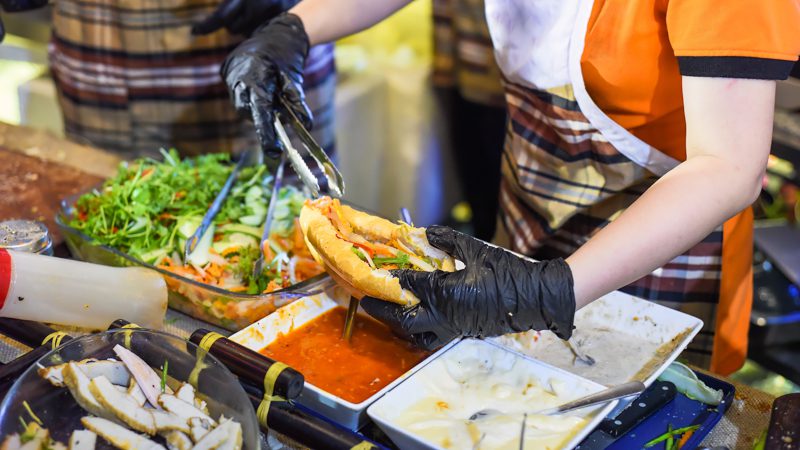
France colonised Vietnam for over 60 years. During this time, French foods were introduced, and locals began eating bread with cold cuts, butter and cheese. After the French pulled out in 1954, the people of Saigon started putting their own spin on the French baguette, and so the banh mi was born.
Banh mi bread has an airy texture and a crunchy crust. There are countless variations, but the basic elements include pate, deli-style meat, pickled veggies (radish, carrot and cucumber ribbons), coriander, fresh chilli and a dash of Maggi seasoning. There are plenty of vegetarian options too – just ask for ‘banh mi chay’.
Discover the best local banh mi joints in Vietnam
4. The torta, Mexico
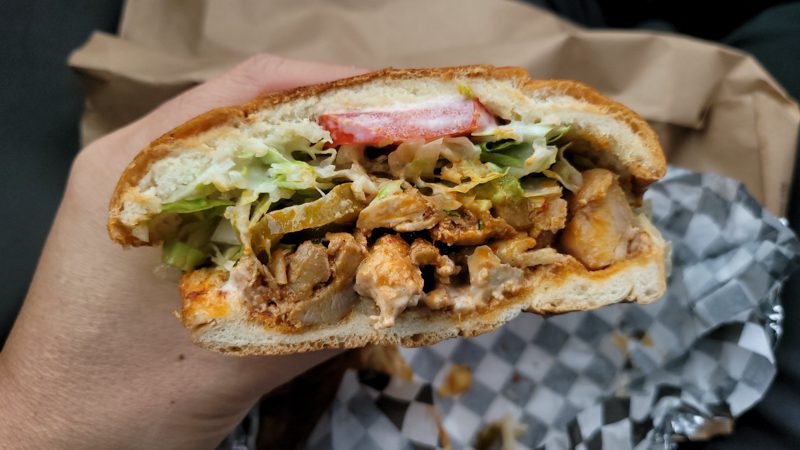
As tempting as it may be to taqueria-hop your way around Mexico, you’ll want to leave room for a torta or two. In fact, a torta may be right up your street if you love tacos but aren’t keen on the 45-degree head tilt required for minimum spillage. Tortas are made with a crusty roll that resembles a French baguette. It’s said to have originated in Puebla during the French occupation of Mexico in the 1860s.
The sky’s the limit when it comes to fillings, but each region has its speciality. In Guadalajara, tuck into torta ahogada, a famous ‘drowned’ torta loaded with slow-cooked shredded pork and hot chilli sauce. In Mexico City, sink your teeth into a torta Cubana, which, despite its name, is unmistakenly Mexican with a medley of meats such as breaded pork loin, hotdog sausages and chorizo, cheese, fried egg, beans, avocado and salad. Phew.
Try authentic tortas, tacos and tostadas in Mexico
5. The sabich, Israel
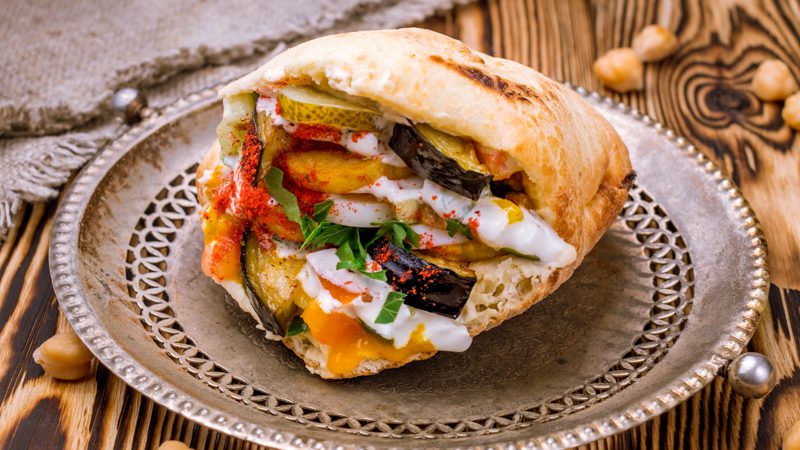
Sabich is a famous Iraqi-Jewish sandwich made with fried eggplant, hard-boiled eggs, potato, hummus, tahini, pickles and amba (an Iraqi mango chutney) stuffed neatly into a warm pita pocket. It’s typically eaten for breakfast, but you can find it at street food stalls any time of day.
Sabich was originally eaten on the day of Shabbat, also known as the Sabbath, a weekly religious tradition that prohibits 39 creative activities including cooking and baking. Families would prepare all the ingredients the day before and assemble a plate on Shabbat. The ingredients were brought to Israel by Iraqi Jews during the early years of the modern state and combined with pita, creating the delicious (and hunger-busting) sabich sandwich.
6. The mortadella panino, Italy
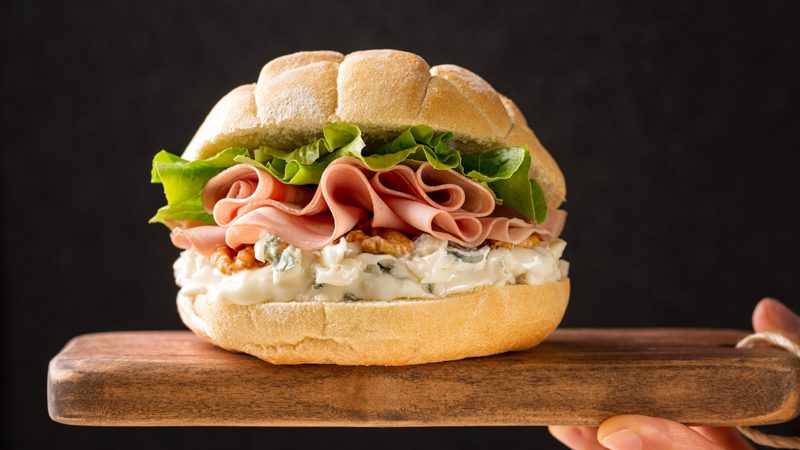
Freshness and simplicity are at the heart of Italian cuisine. The focus on using top-quality ingredients and the dedication to age-old traditions mean a simple caprese salad, tomato sauce or sandwich in Italy is next-level tasty. No matter where you go, you’re never too far from a salumeria (sandwich shop) serving a plethora of paninos piled with cured meats, cheeses and grilled vegetables.
If you want a timeless classic, go for a panino with pink salami, prosciutto di parma or mortadella panini – ideally in the historic city of Bologna, the home of mortadella. Bologna is also the home of tortellini and ragu bolognese… just in case you need more convincing.
7. The gyro, Greece
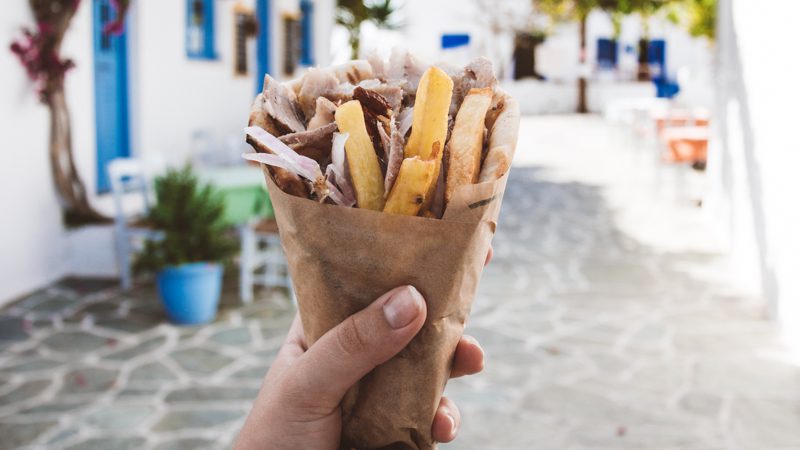
In Greek, gyro means ’round’ or ‘turn’. But it’s also the name of one of the country’s most famous street foods. Pita bread is packed with thin slices of pork or chicken, salad, chips and lashings of creamy tzatziki. The meat is grilled on a spinning vertical rotisserie (hence the name) and is shaved off as it cooks. It’s similar to a Greek souvlaki, which is the same but with skewered meat.
No matter how many gyros or souvlakis you’ve eaten in the early hours after one too many beers, you’ve not had the real deal unless it’s from an unassuming hole-in-the-wall in Athens.
Gorge on gyros, spanakopita and moussaka in Greece
8. The rou jia mo, China
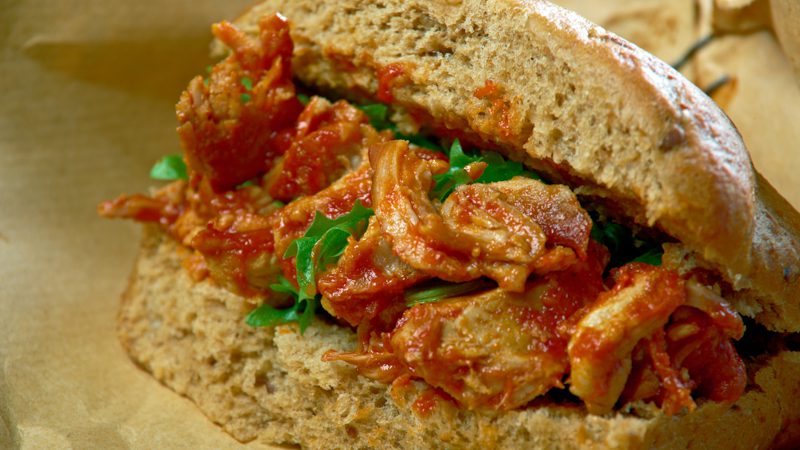
Hamburgers might not be the first food that springs to mind when you picture Chinese cuisine, but it turns out China is home to what has been dubbed ‘the world’s oldest hamburger’. We’re talking 2200 years old. This popular street food is said to have originated in Shaanxi province during the Qin Dynasty (221 to 206 BC).
Rou jia mo is a bit like a fresher, spicier version of the sloppy Joe. It’s made with freshly baked mo (a traditional bun that’s chewy on the inside and crusty on the outside) stuffed with braised pork, and doused with a flavoursome broth and coriander. You’ll see and smell street vendors selling rou jia mo all over the country.
Tuck into rou jia mo on Intrepid’s Explore China trip
9. The cevapi sandwich, Balkans
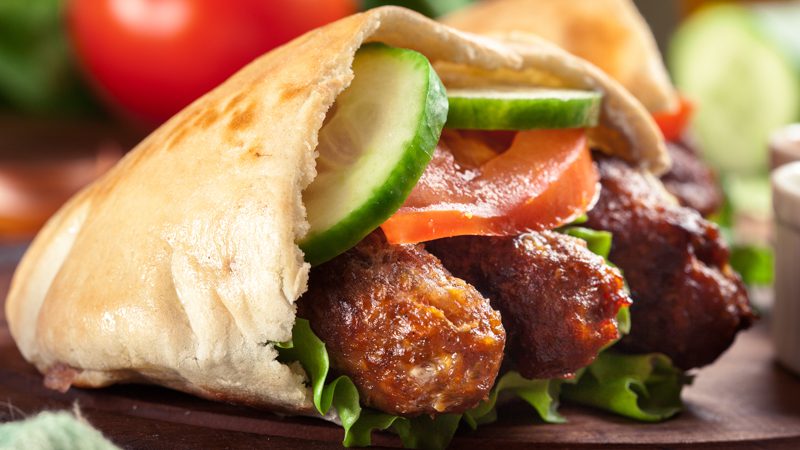
Cevapi, or cevapcici, are skinless sausages from the Balkans. The dish is believed to have originated in the Balkans during the Ottoman Empire and is similar to the Turkish kofta kebab, which is cooked and served on a skewer.
Cevapi is made with ground pork, lamb or beef (or a mix of all three), onion, garlic, cayenne pepper and paprika. Baking soda is also added to create a springier texture. It’s grilled over charcoal and has a wonderful smoky taste. Cevapi is typically served in flatbread with chopped onion, sour cream, feta cheese, cottage cheese, kajmak (a salted clotted cream), and ajvar (a Balkan relish made with red capsicum and eggplant).
Devour cevapi, fresh seafood and fine wine in Croatia
10. The khachapuri, Georgia
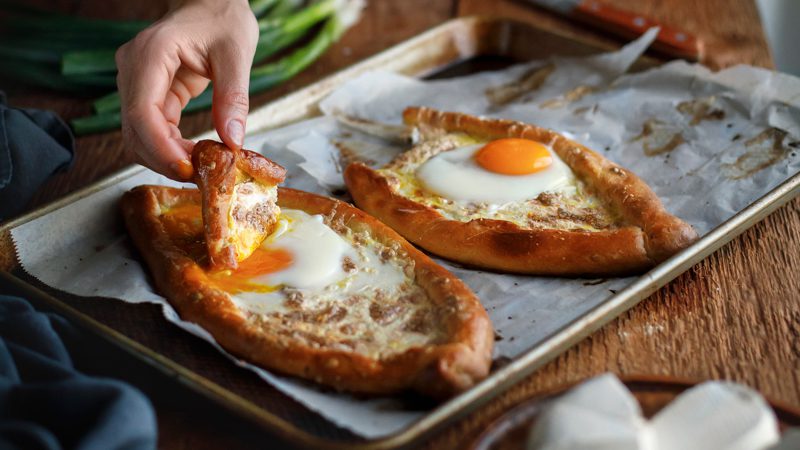
Khachapuri is what you’d get if a pizza and grilled cheese sandwich had a child. This boat-shaped flatbread from Georgia is filled with sulguni and imeruli cheeses and baked until the crust is golden. Evidence suggests it dates back to the 12th century when Roman soldiers introduced pizza recipes to locals as they passed through the Black Sea region.
There are dozens of regional varieties from lobiani (filled with beans and ham) to khabizgina (stuffed with potato). One of the most indulgent and delicious is adjaruli khachapuri, served with a partially set egg and a stick of melted butter on top. Tear off chunks and dip them in the gooey centre.
The only downside to eating khachapuri is that your standard cheddar slices melted between two hunks of white bread will never meet the mark again. Sorry.
Eat the cheese toastie of all cheese toasties in Georgia
Hungry? Check out Intrepid’s range of food trips for culinarily curious travellers.

